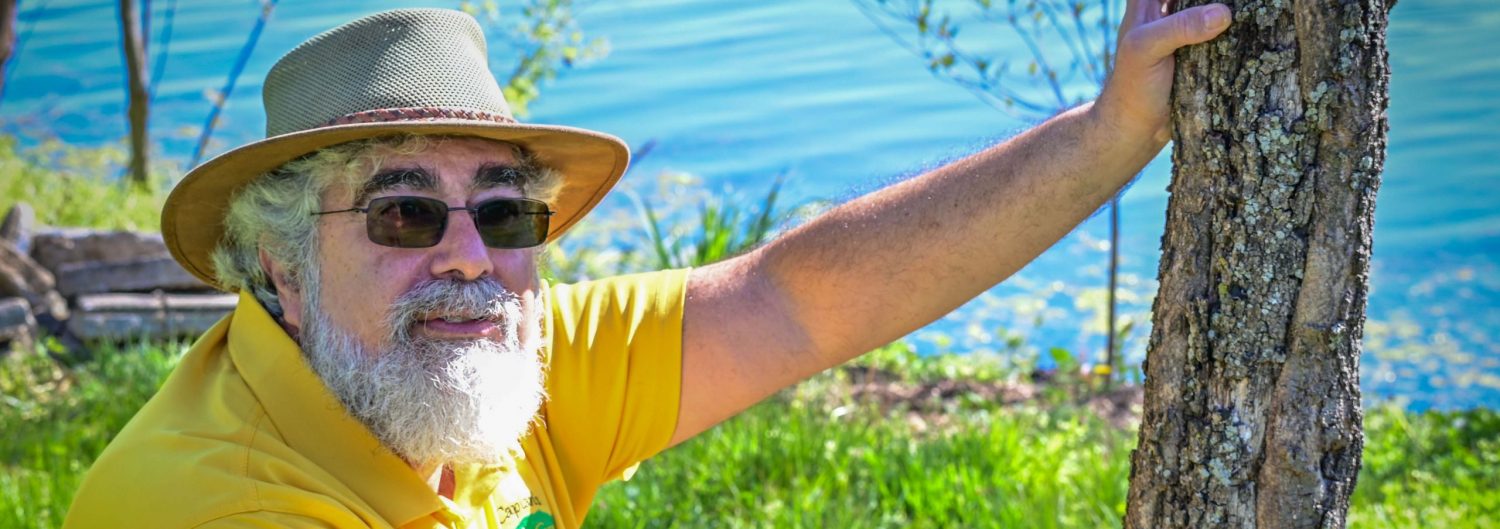Dieback on Falsecypress
I’ve been out to diagnose several falsecypress (Chamaecyparis spp.) over the last few weeks. These trees have shown dieback of entire branches scattered randomly throughout the tree (see photo at bottom of page). The primary pathogen present is a fungus in the genus Diplodia (a similar fungus that causes tip blight in pines).
Small twigs are infected first, which eventually leads to dieback of larger branches. Note the spherical black spore bearing structures (pycnidia) at the base of needles in the second photo at the bottom of this email. You will need a magnifying glass to see these. The spores are spread by wind and splashing rain to other areas where they start new infections.
Falsecypress is native to coastal areas of the Pacific Northwest where they get abundant rainfall and have moderate summer temperatures. This does not describe anything we can expect in southern Indiana. Trees under stress from growing outside their natural range will be more susceptible to fungal infections. As with Diplodia tip blight on pine the disease will likely be very difficult to control and spraying a tree this large may be impractical. Dead twigs can be trimmed off but the existing fungus inside the needles and branches will continue to grow and new dead stems will show up. Adequate mulch and watering during dry periods will help reduce moisture stress but it may be too late to save a tree in this condition. Replacing the tree with a species better adapted to the site will be the best long-term solution to this problem.
**********
Fire Blight Rampant on Apples, Pears
Fire Blight is a bacterial disease that commonly hits apples, crabapples, pears, and other members of the family Rosaceae. The infection occurs during bloom. The most commonly observed symptom is the characteristic “shepherd’s crook” that develops on wilting twigs, shoots, and leaders. The name “fire blight” aptly describes the blackened leaves characteristic of infections on pears (see photo at bottom of email).
This disease is most severe during flowering, when warm spring weather (70-81°F), coupled with rainfall and hail, provide optimum conditions for fire blight development.
Disease can be minimized, and even prevented, by good horticultural practices (namely, the use of resistant cultivars and resistant rootstocks). Additional cultural practices
should include:
• Proper site selection that provides more than six hours of sunlight per day.
• Careful nitrogen fertilization, thereby reducing succulent, susceptible growth.
• Adequate tree spacing to minimize stress.
• Proper pruning practices. Remember the following:
— Prune in late winter while trees are dormant to minimize the risk of infection. Avoid excessive winter pruning which otherwise stimulates vegetative growth the following season.
— Never prune to shape the tree at the same time disease management is taking place.
— Prune only in dry weather, and make cuts at least 12 inches away from the site of infection and into healthy plant tissue. Delay summer pruning until the terminal bud has set and growth has ceased.
— Dispose of all infected material and sterilize pruning equipment between cuts by dipping in a solution of 10 percent bleach with a few drops of detergent.
— Plants that have more than 50 percent of their canopy infected should be removed.
I can help with the winter pruning to remove diseased, cankered stems. Because of the risk of spreading infection, I strongly recommend against summer pruning.
**********
Rust Disease Causing Strange “Horns” on Pear, Hawthorn Fruit
Another disease I’m seeing this year affecting members of the family Rosaceae is cedar-apple and cedar-hawthorn rust. The most common symptom of the cedar rusts is orange spots on the leaves of crabapple, hawthorn, and pear trees…but oddly enough, I’m not seeing much of that this year. What I am seeing are whitish horn-like structures on the fruit. These structures are spore-producing structures, and the spores are a bright orange dust…see picture at the end of this email. These spores are blown to cedars and junipers, where they create small, chocolate-colored galls. In the early spring, these galls will produce orange, gelatinous tentacles, which release spores that attack the crabapples, pears, hawthorns, serviceberry, and other related plants.
Rust disease on crabapples and related trees can occur each year, but some years appear worse than others. Timely fungicide treatments in the early spring can help reduce the disease, but are rarely warranted for most trees.
Rust diseases can hit many species of plants; however, the rust fungus that attacks apple will not attack other non-related species. One example I have in my own garden is hollyhock rust. The orange-yellow spots on the leaves begin in early spring, and work their way quickly up the plant, causing eventual leaf death and defoliation. Early spring applications of the fungicide chlorothalonil (Daconil) can control the disease, but at this point it it’s too late.




